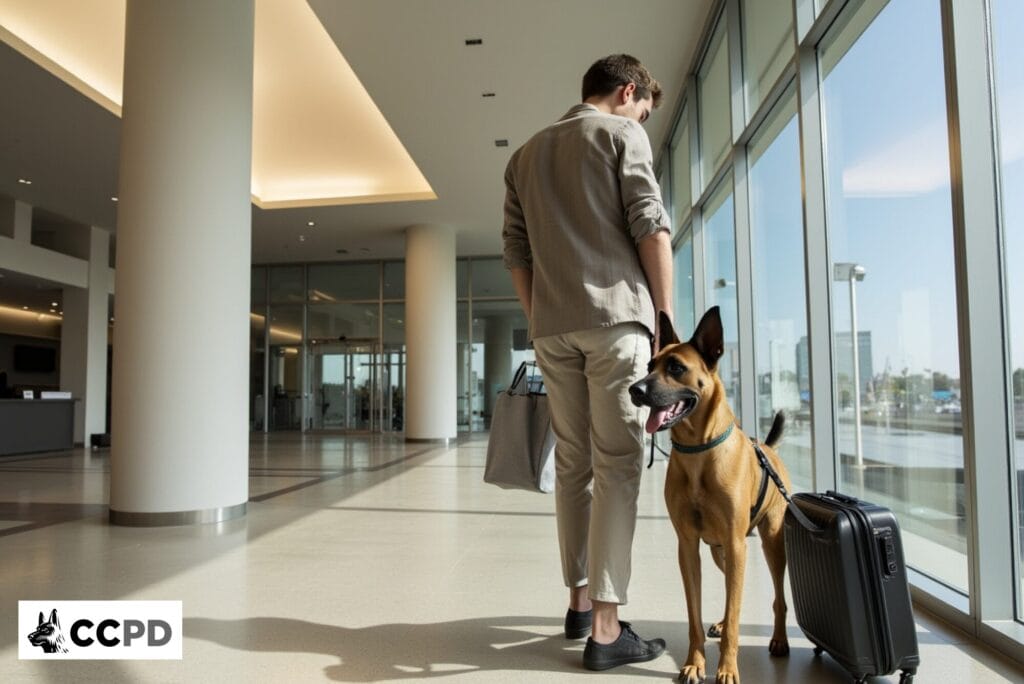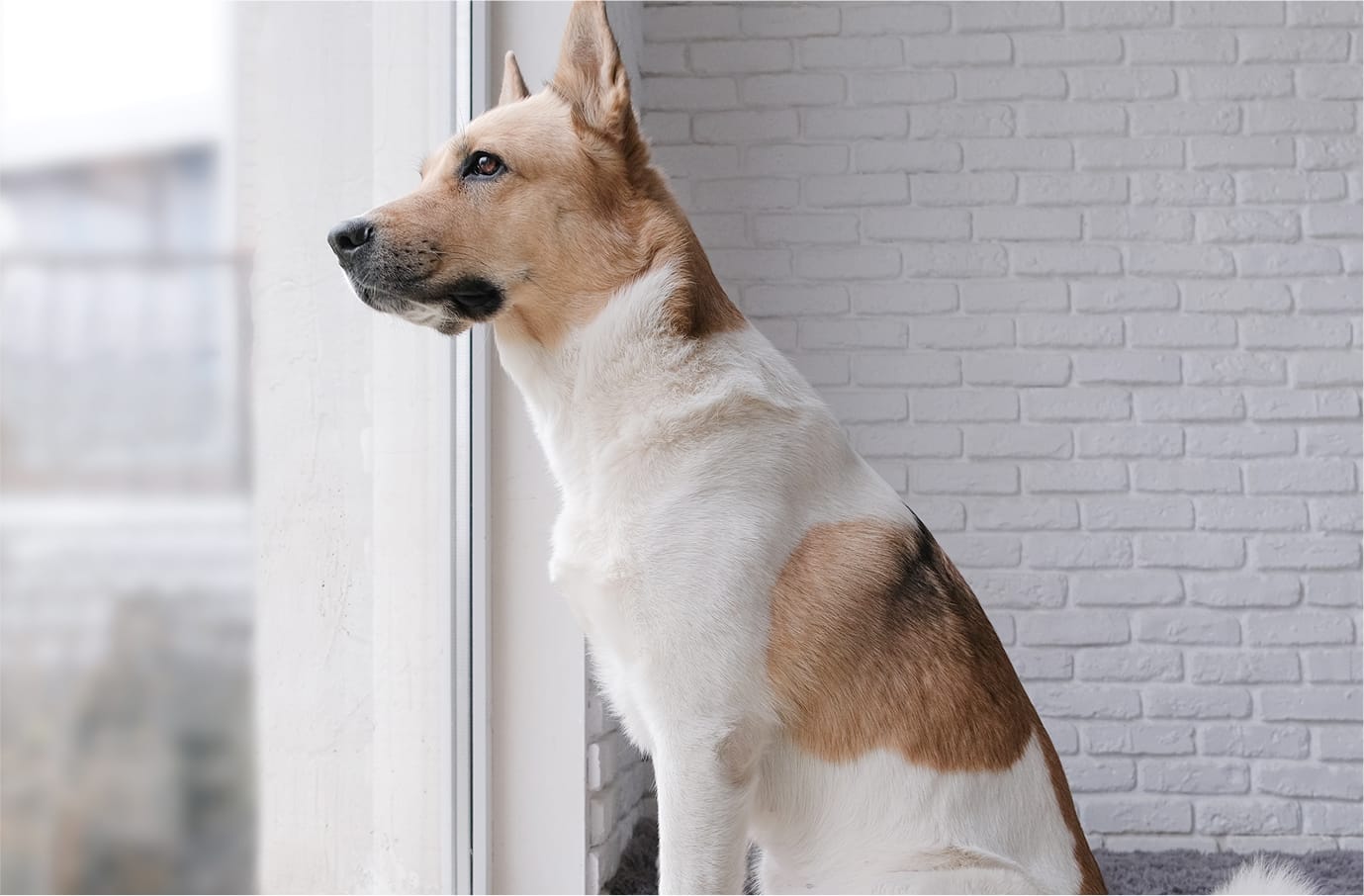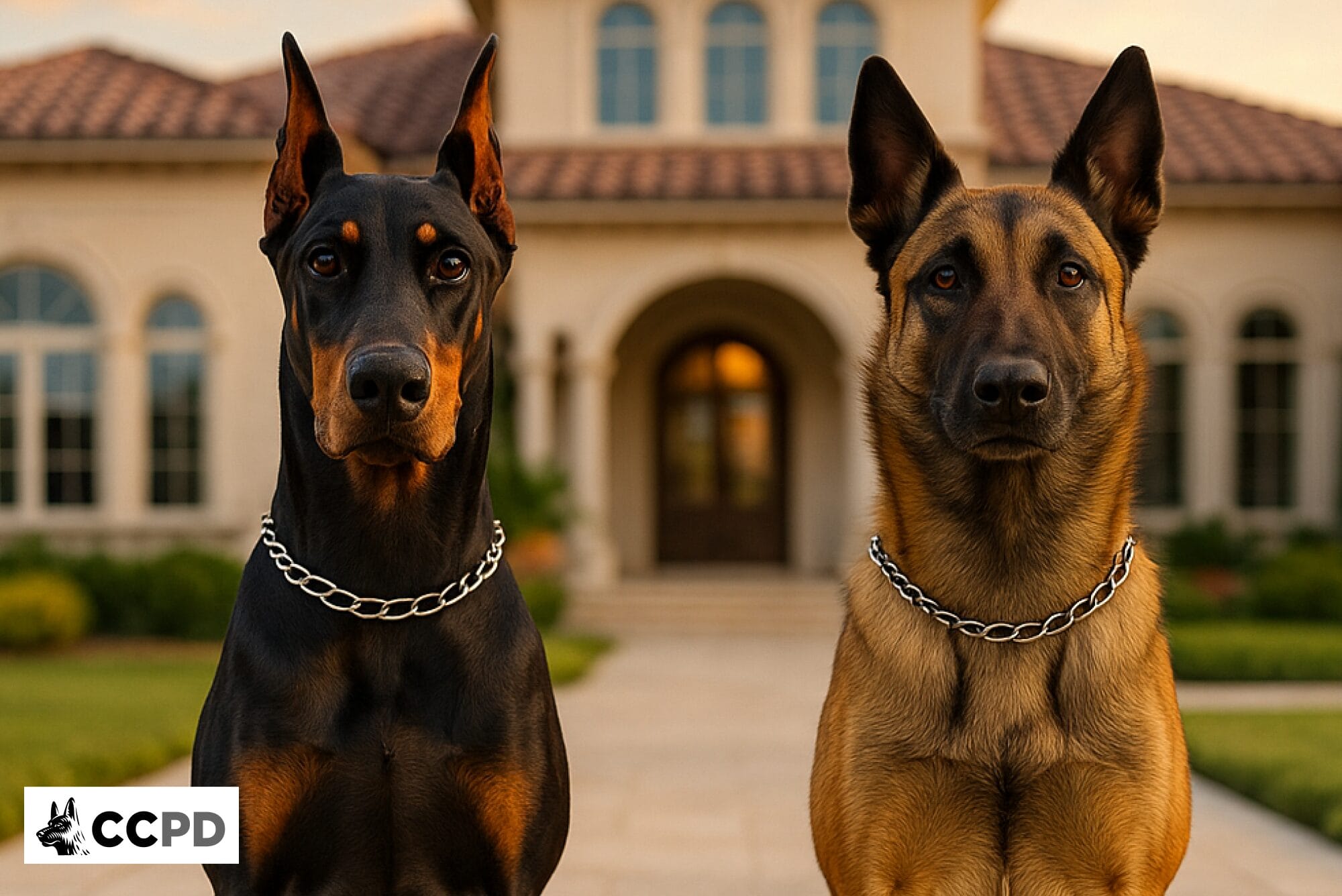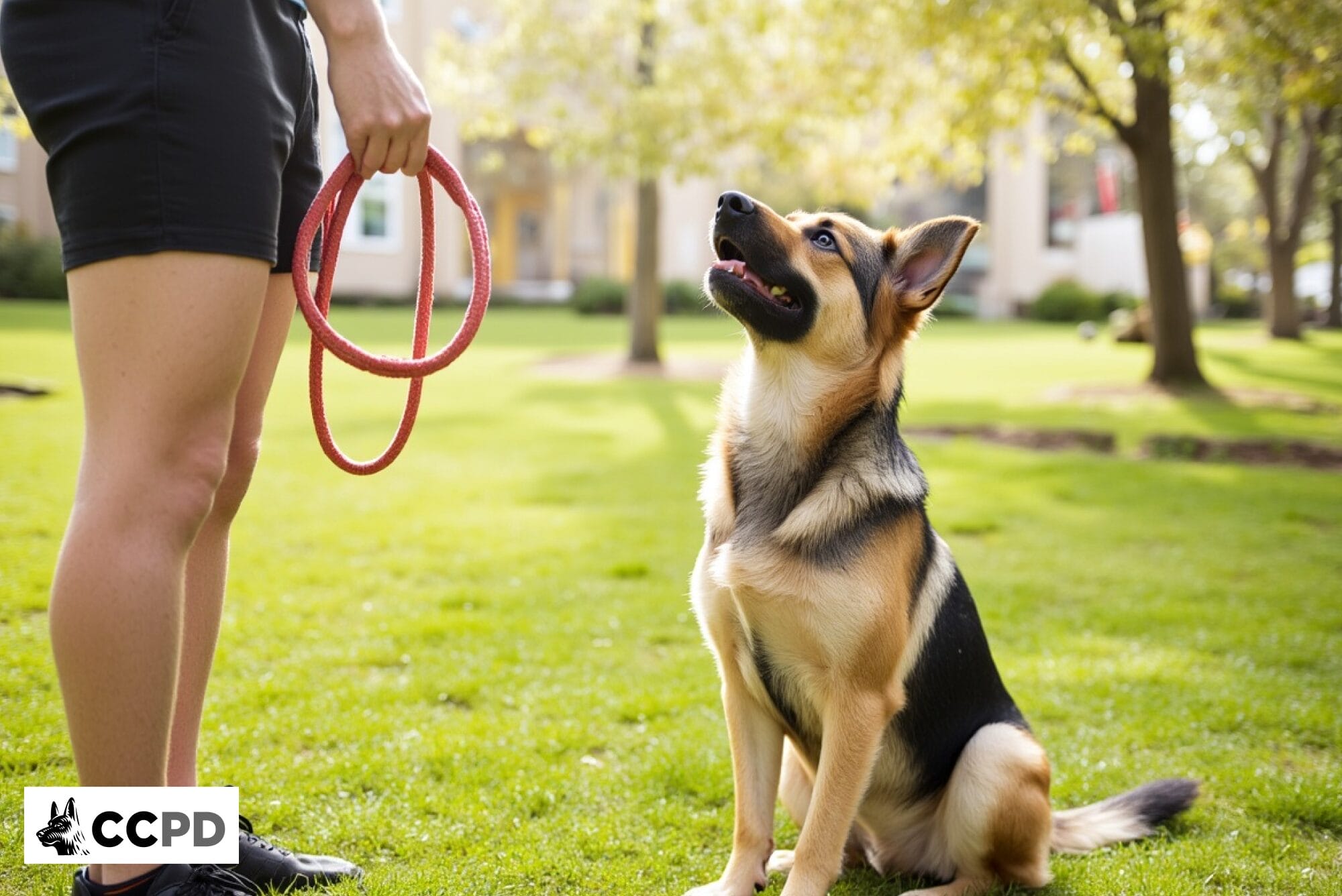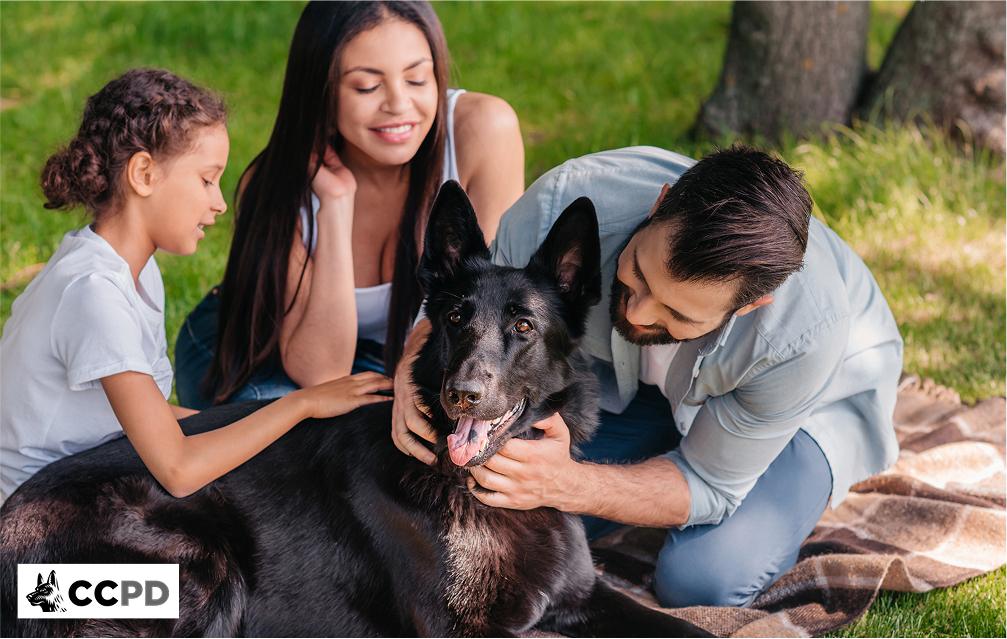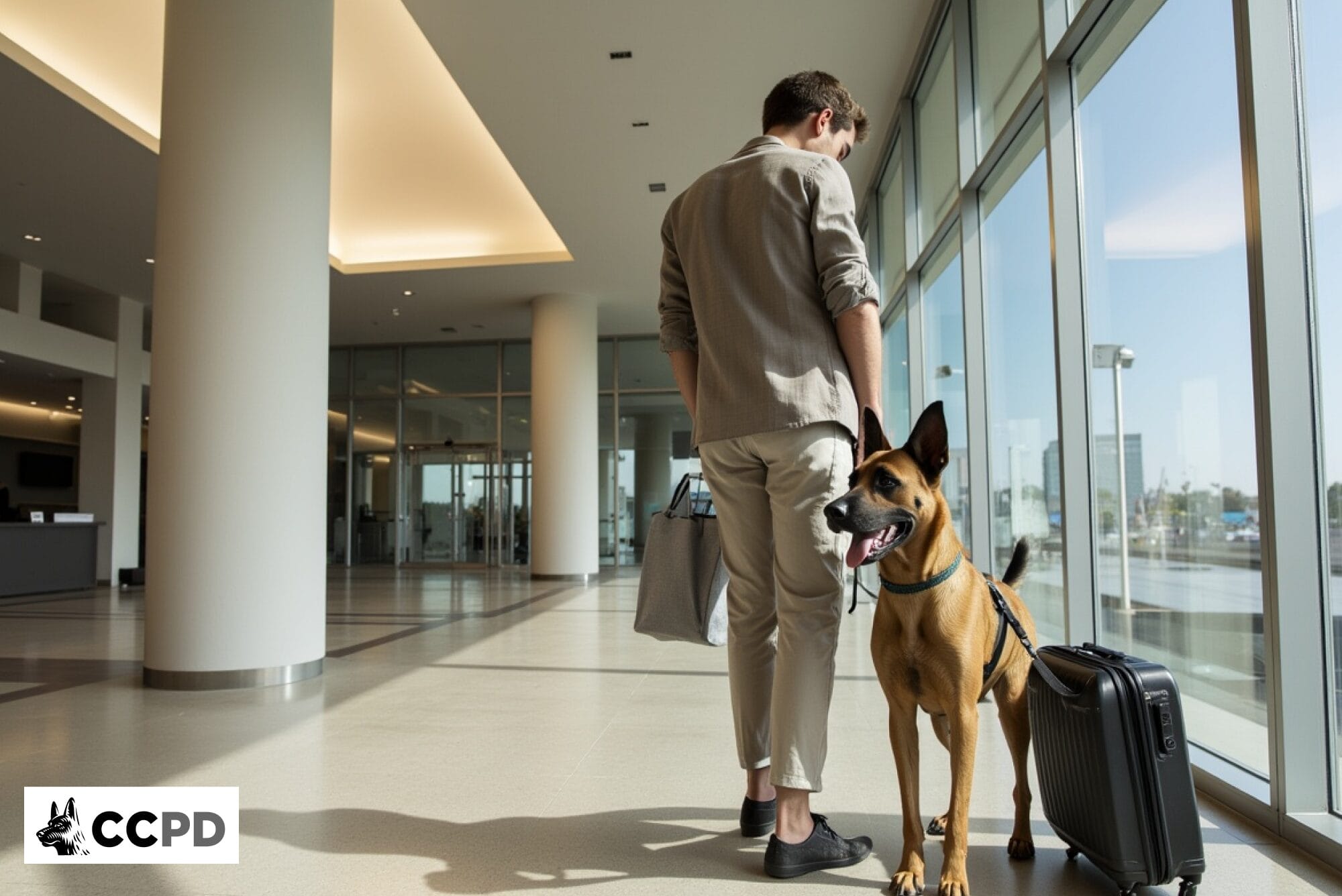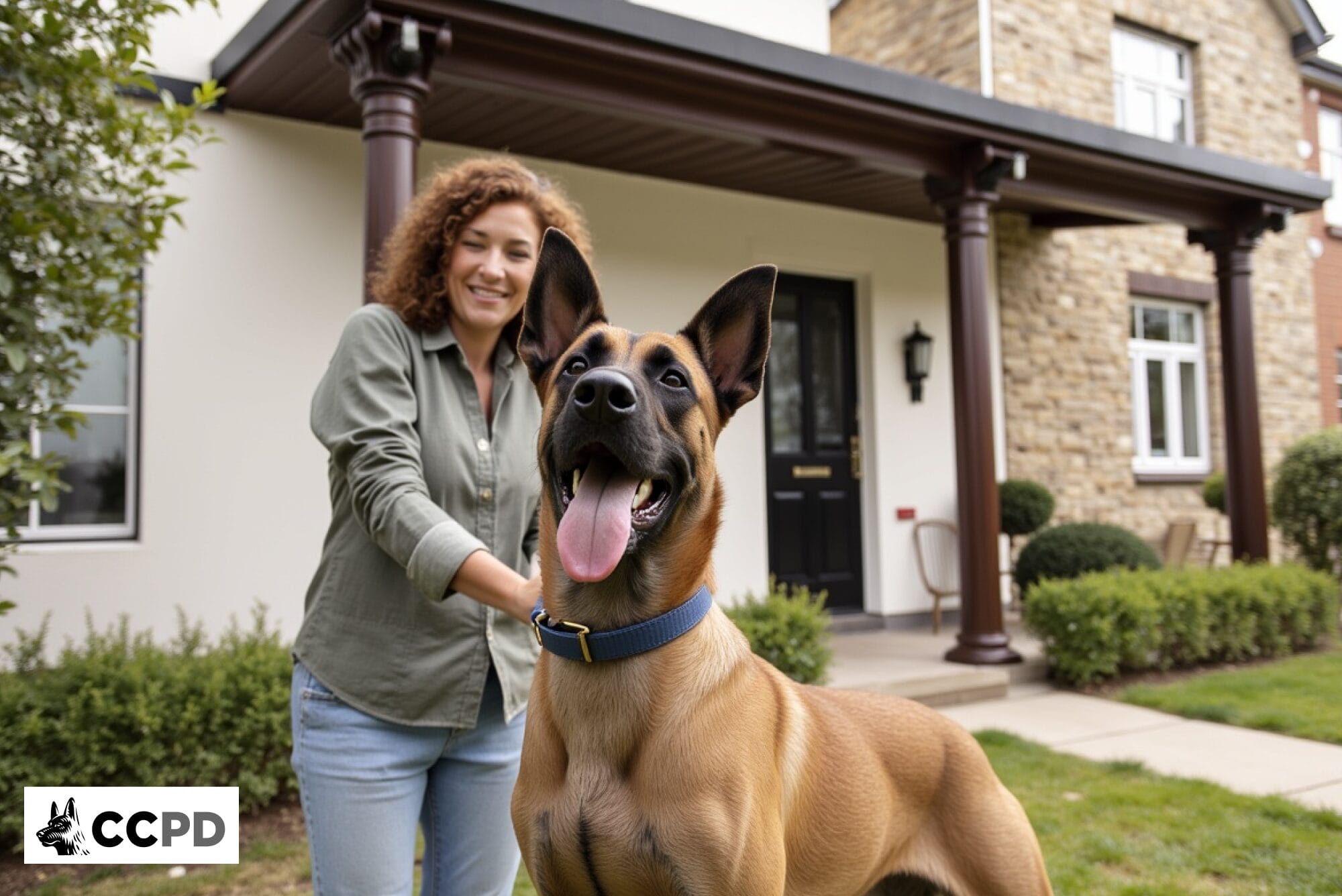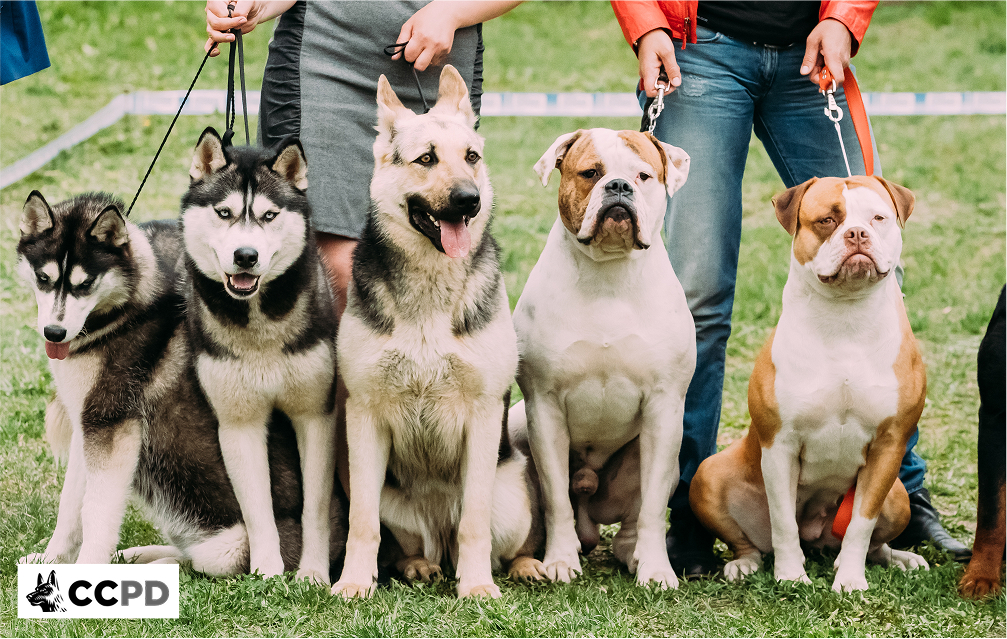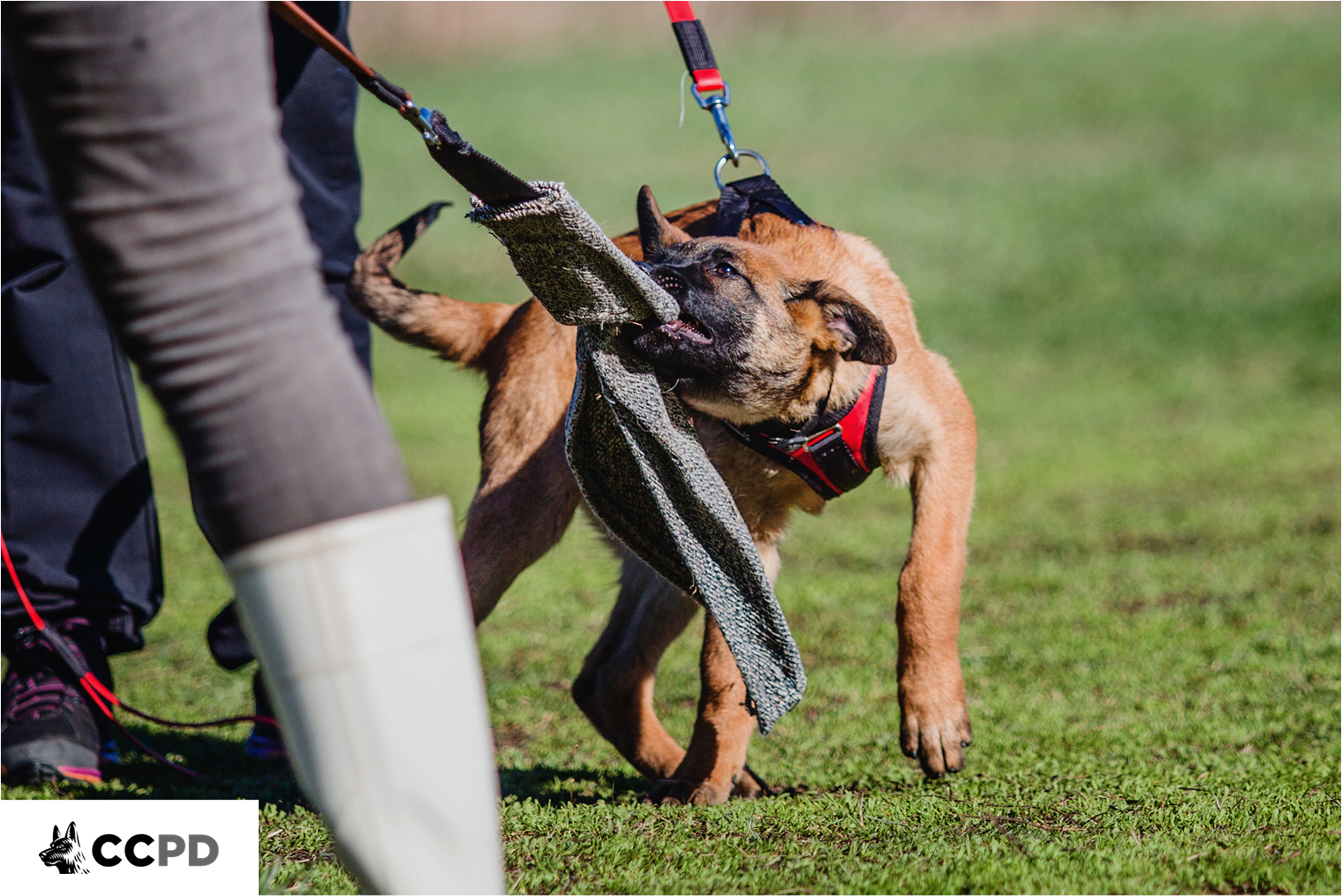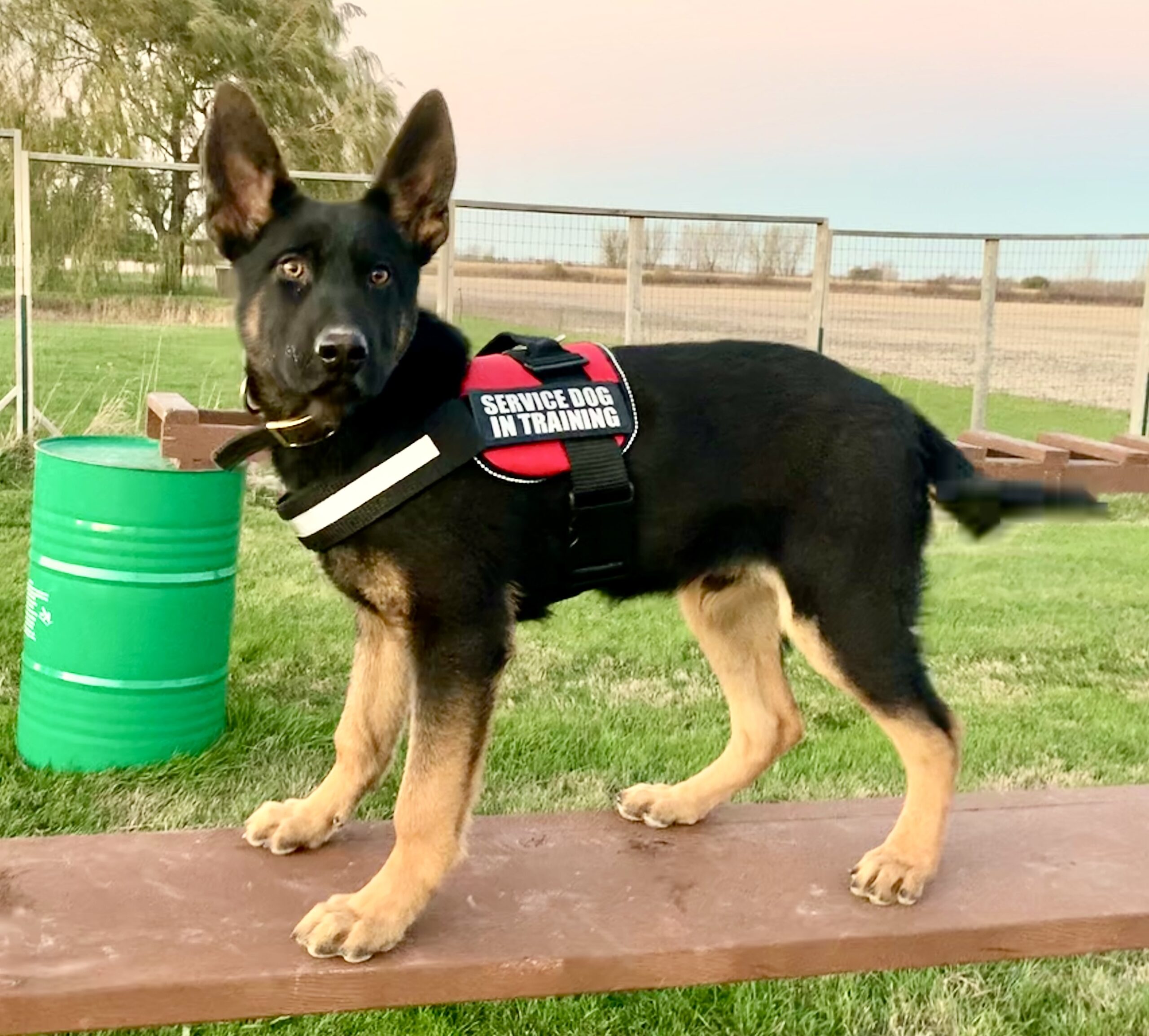Traveling with a protection dog isn’t like traveling with a regular pet. These highly trained animals create unique challenges that most dog owners never face. TSA agents don’t know what to make of them. Hotels hesitate to accommodate large, intimidating breeds. Airlines treat them like oversized luggage.
The travel industry operates on standard pet policies that don’t account for protection dogs. Your German Shepherd or Belgian Malinois might be impeccably trained, but they’re still seen as potential liability risks. This creates a frustrating gap between what you know your dog can do and what others expect them to do.
Planning becomes everything when you travel with a protection dog. You can’t just book a flight and show up at the airport. Every step requires research, phone calls, and backup plans. But it’s absolutely doable once you understand the system and work within its limitations.
The Legal Reality: Protection Dogs Aren’t Service Dogs
This distinction matters more than you might think. The Americans with Disabilities Act recognizes service dogs as working animals that perform specific tasks for disabled individuals. Protection dogs don’t fall into this category, no matter how professional their training.
What does this mean for travel? Everything. Airlines won’t waive pet fees. TSA won’t provide special accommodations. Hotels can charge extra deposits. Your protection dog gets treated like any other pet, despite their superior training and temperament.
Some owners try to pass their protection dogs off as service animals. Don’t do this. It’s illegal and creates problems for legitimate service dog handlers. Plus, it backfires spectacularly when your “service dog” displays protection behaviors that real service dogs would never exhibit.
Work with the system, not against it. Your dog’s training actually helps here. They’re calmer under pressure than most pets. They follow commands reliably. They adapt to new environments quickly. These advantages make standard pet travel procedures much smoother.
The key is transparency. Tell TSA agents, airline staff, and hotel clerks exactly what you’re dealing with. Most people respond better to honesty than surprises.
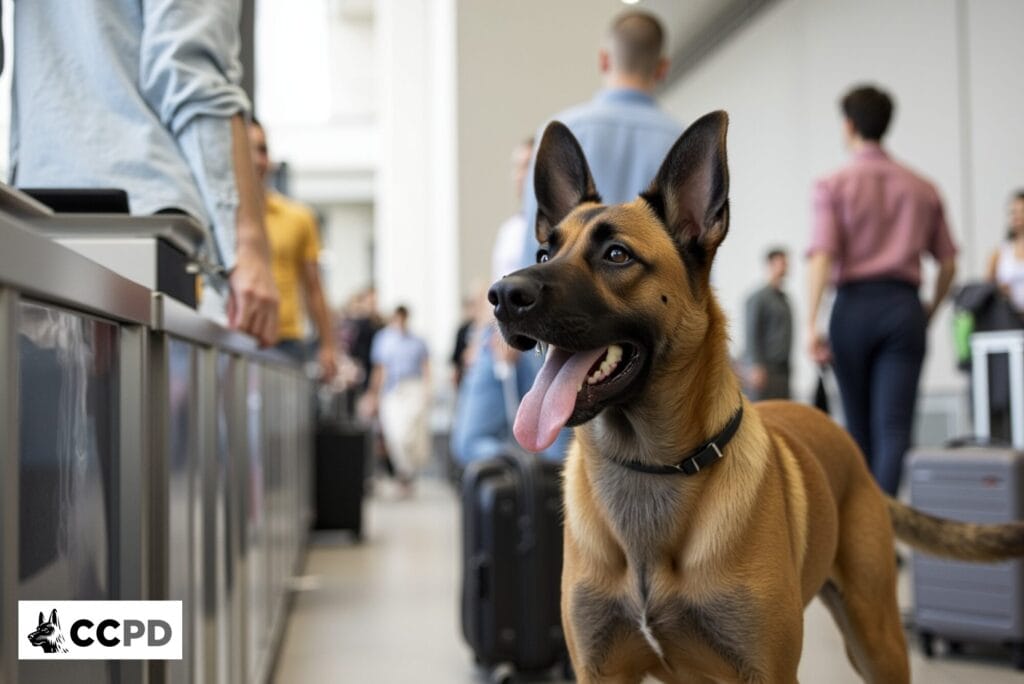
Getting Through Airport Security
TSA screening with a large protection dog takes time and patience. Agents often haven’t dealt with dogs this size or this well-trained. They’re not sure what to expect, which makes them cautious.
The Screening Process:
- Arrive 45 minutes early beyond normal recommendations
- Tell TSA immediately that you have a large dog
- Expect additional screening for both you and your dog
- Be ready to remove the leash and collar for separate screening
- Your dog may walk through the detector alone or get a pat-down
Communication matters here. TSA agents deal with nervous, untrained pets all day. Your calm, obedient protection dog actually makes their job easier once they realize what they’re working with. Demonstrate a few basic commands if it helps put them at ease.
Call TSA Cares at 1-855-787-2227 at least 72 hours before flying. They can coordinate with your departure airport and potentially streamline the process. Some airports offer expedited screening for special circumstances, though this isn’t guaranteed.
Don’t rush this process. Stressed handlers create stressed dogs. Your protection dog feeds off your energy, so stay calm and patient even when lines are long and agents are confused.
Airline Policies and Cargo Travel
Most protection dogs are too big for cabin travel. This means cargo, which many owners dread. The reality is that cargo travel is safe when done properly.
Airlines have different rules about breeds, sizes, and cargo policies. Some won’t transport breeds commonly used for protection work. Others have weight limits that exclude larger dogs. Research thoroughly before booking.
Weather restrictions affect cargo travel significantly. Airlines stop accepting pets during extreme temperatures—typically summer months in hot climates and winter months in cold ones. Plan travel dates around these restrictions.
Book cargo space early. Airlines require a minimum of 48-72 hours’ notice, sometimes more. You’ll need an approved crate that meets specific size and ventilation requirements. Your dog must be comfortable in this crate for several hours.
Costs add up quickly. Cargo fees range from $200 to $500 each way for large dogs. They can even exceed $1000 for international travel. Add crate costs, health certificate fees, and potential overnight boarding for connecting flights. Factor these expenses into your travel budget.
Consider driving for trips under 12 hours. The stress and expense of cargo travel often aren’t worth it for shorter distances.
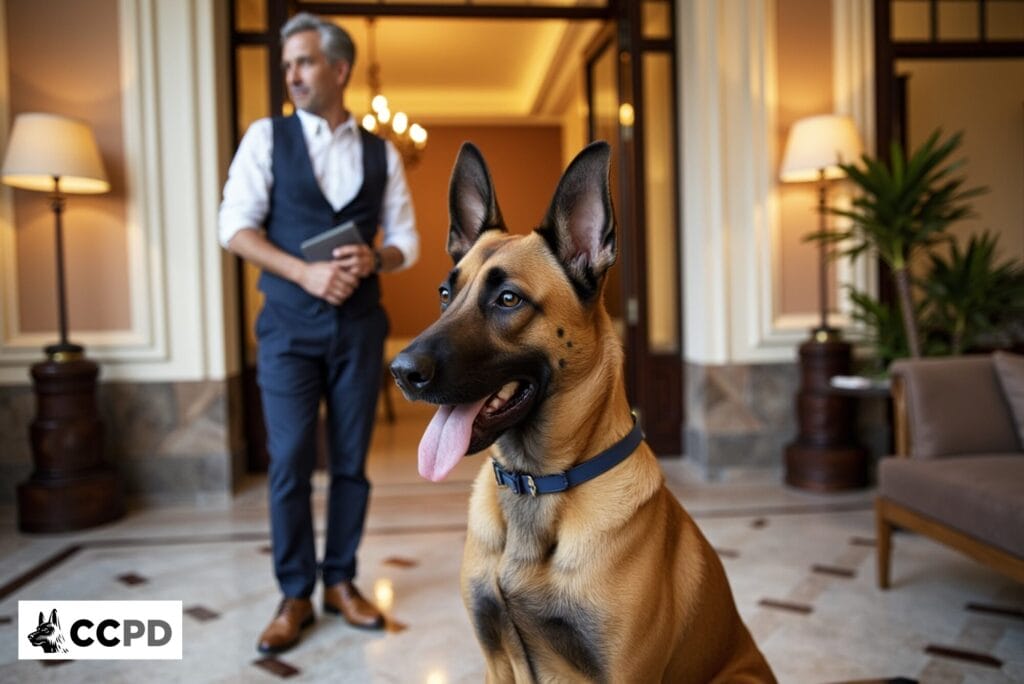
Finding the Right Hotels
Pet-friendly doesn’t always mean protection-dog-friendly. Many hotels that welcome small dogs balk at 80-pound German Shepherds. Size restrictions and breed discrimination are real issues you’ll face.
Booking Strategies:
- Use specialized sites
- Call hotels directly instead of relying on booking sites
- Ask about weight limits and breed restrictions upfront
- Request ground-floor rooms near exits
- Ask about pet relief areas and walking routes
Questions to Ask:
- “What’s your weight limit for dogs?”
- “Do you restrict German Shepherds, Belgian Malinois, or similar breeds?”
- “What are your pet fees – per night or per stay?”
- “Do you have rooms designed for large dogs?”
Be honest about your dog’s size and breed when booking. It’s better to address concerns during the reservation than face problems at check-in. Some hotels require additional deposits for large dogs, but transparency prevents awkward situations later.
Vacation rentals offer more flexibility than hotels. Airbnb and VRBO let you filter for pet-friendly properties and communicate directly with hosts about your specific needs. You get more space and fewer restrictions.
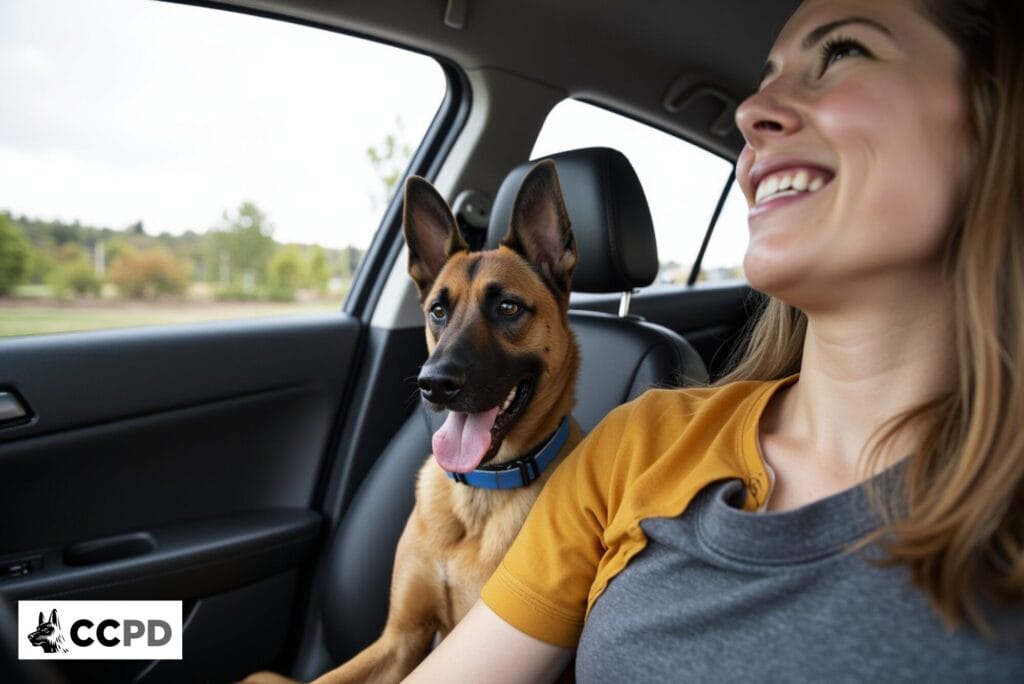
Road Trip Planning
Driving gives you the most control when traveling with a protection dog. You set the schedule, control the environment, and avoid airline restrictions. But long drives require their own preparation.
Vehicle safety comes first. A loose 90-pound dog becomes dangerous in an accident. Invest in a quality car harness for large dogs or a properly secured travel crate. Never let your dog ride in truck beds or stick their head out of windows.
Plan stops every 2-3 hours for water, bathroom breaks, and exercise. Research dog-friendly rest stops along your route. Identify 24-hour veterinary clinics in case of emergencies. Apps like GasBuddy help locate pet-friendly stops.
Temperature control requires constant attention. Never leave your dog alone in a parked car. Use window shades, ensure good ventilation, and pack portable fans or cooling mats. Carry plenty of water and a portable bowl.
Pack emergency supplies: first aid kit, extra leash and collar, food for several days, and familiar toys or blankets. Bring more than you think you’ll need.
Legal and Documentation Considerations
Different states—and sometimes municipalities—have unique laws affecting. For instance, on October 1, 2023, thanks to a Florida law that prohibits breed-based restrictions at the local level. However, beware: private housing authorities, HOAs, and vacation rentals may still impose their own breed or size limits. Research destination laws before traveling.
Create a travel folder with vaccination records, health certificates, registration papers, and emergency vet contact information. Most airlines mandate a veterinary health certificate issued within 10–30 days of travel, especially for cargo transport. Include recent photos and detailed identification info in case you get separated. Make sure microchip registration is current.
Insurance gets complicated when traveling with protection dogs. Contact your insurance provider about coverage limitations while traveling. Consider additional liability coverage for hotel stays or rental properties.
Keep documentation easily accessible. Border crossings, random checks, and emergency situations all require quick access to your dog’s papers.
Making Travel Work
Traveling with protection dogs requires extra time, costs more money, and demands more planning than regular pet travel. But it’s absolutely manageable with the right approach.
Your dog’s training actually helps during travel. They stay calm under pressure, follow commands reliably, and adapt to new environments better than most pets. Use this to your advantage by maintaining consistent routines and clear communication.
Budget extra time for every aspect of travel. Expect delays, complications, and unexpected fees. Build flexibility into your schedule and always have backup plans.
The peace of mind that comes from having your trusted protection dog with you often outweighs the logistical challenges. With proper preparation and realistic expectations, you can travel successfully while keeping your four-legged guardian by your side.
